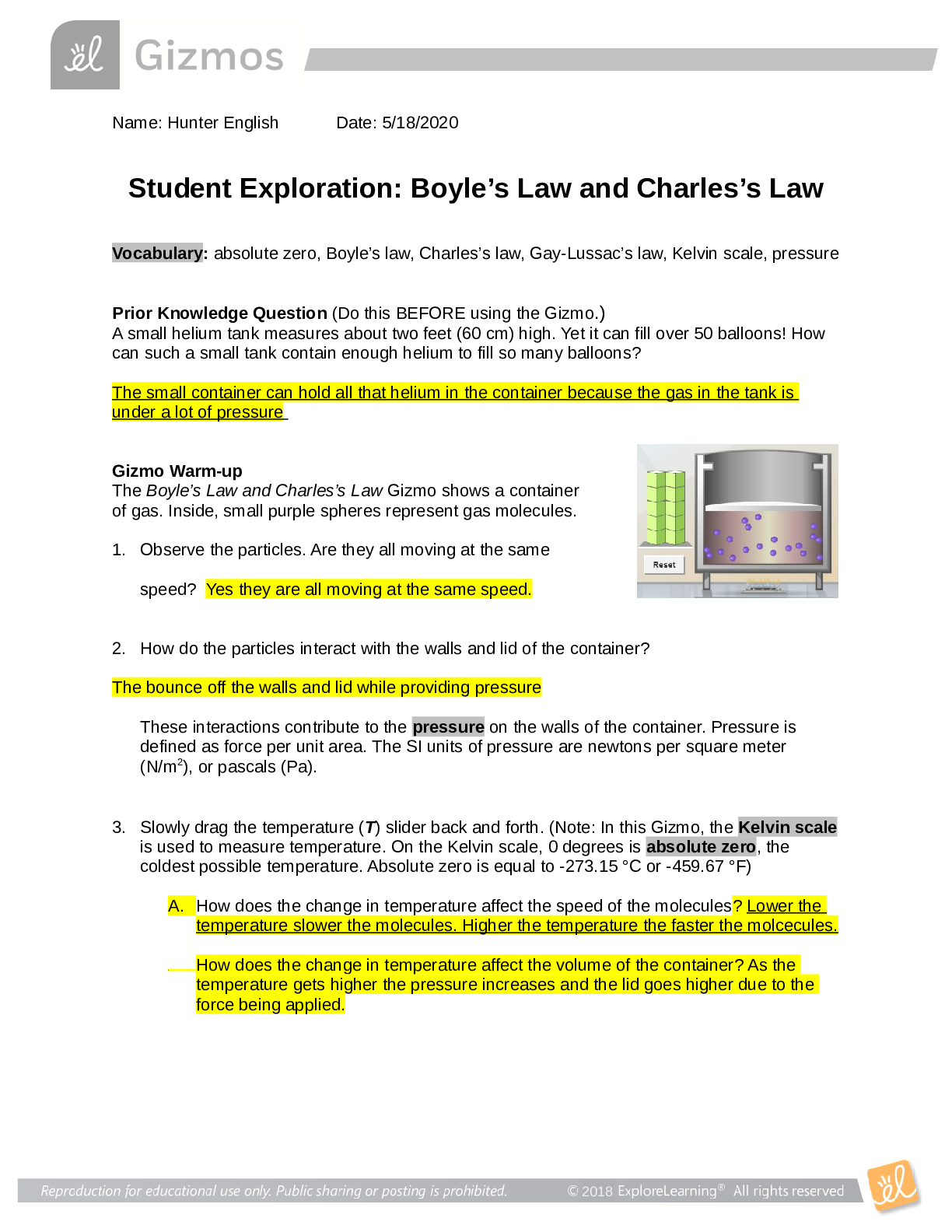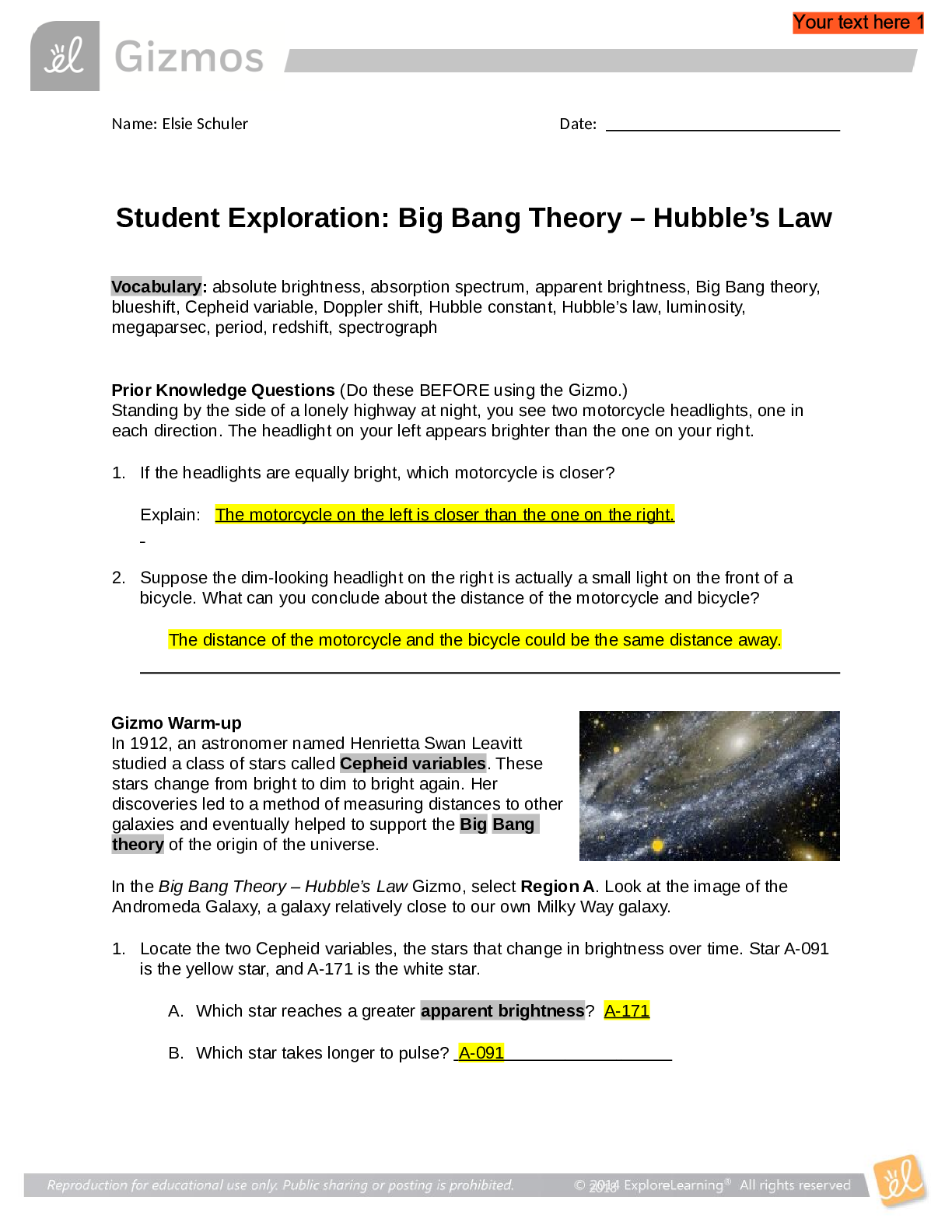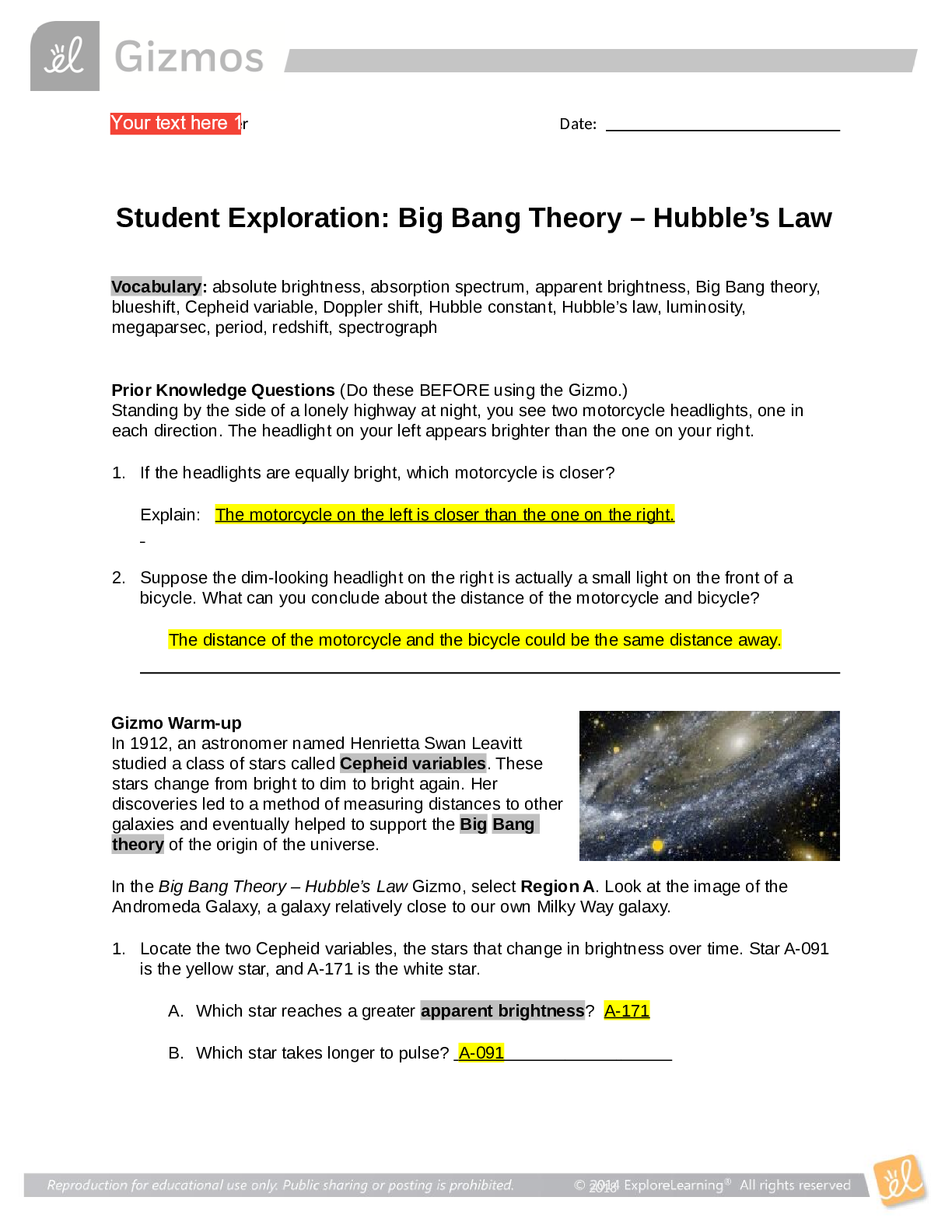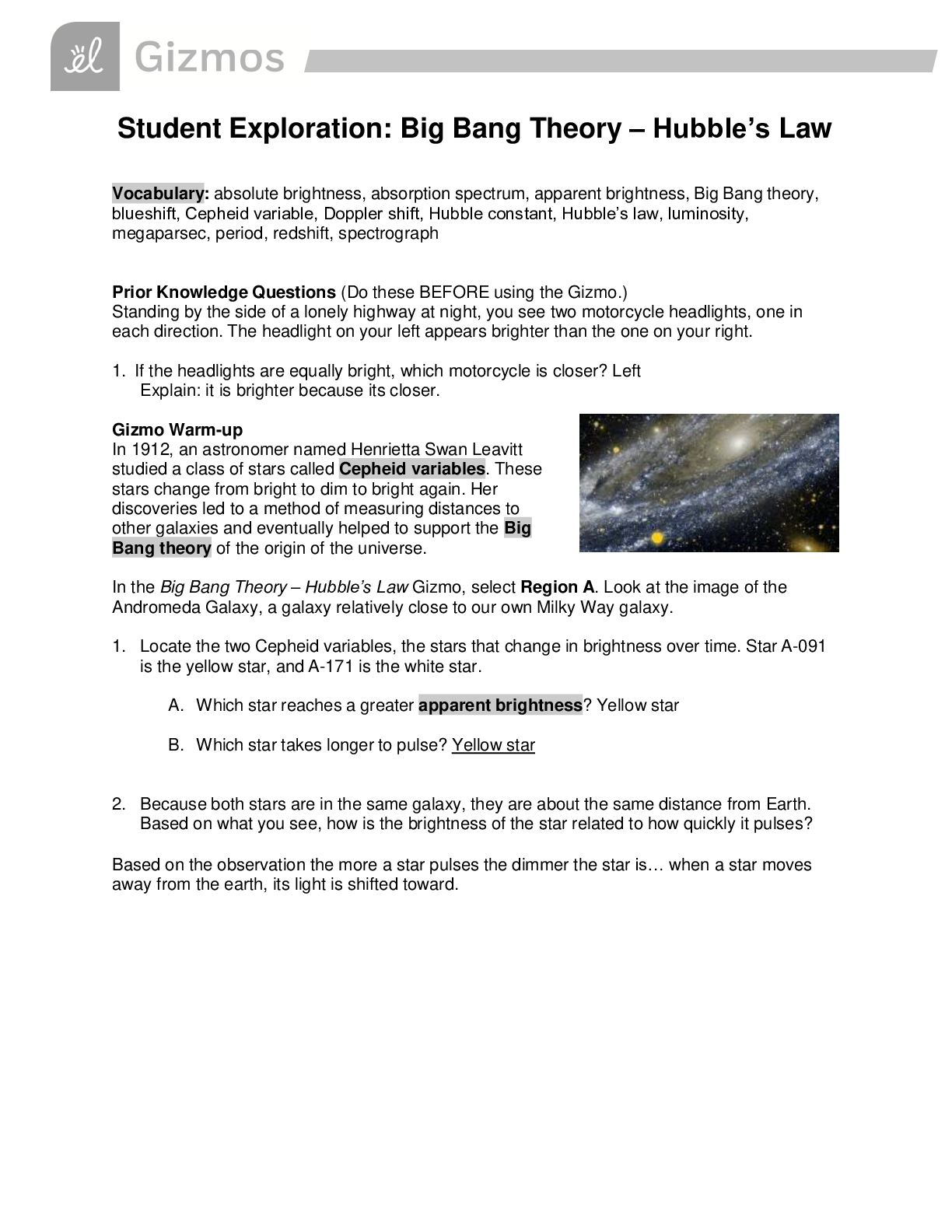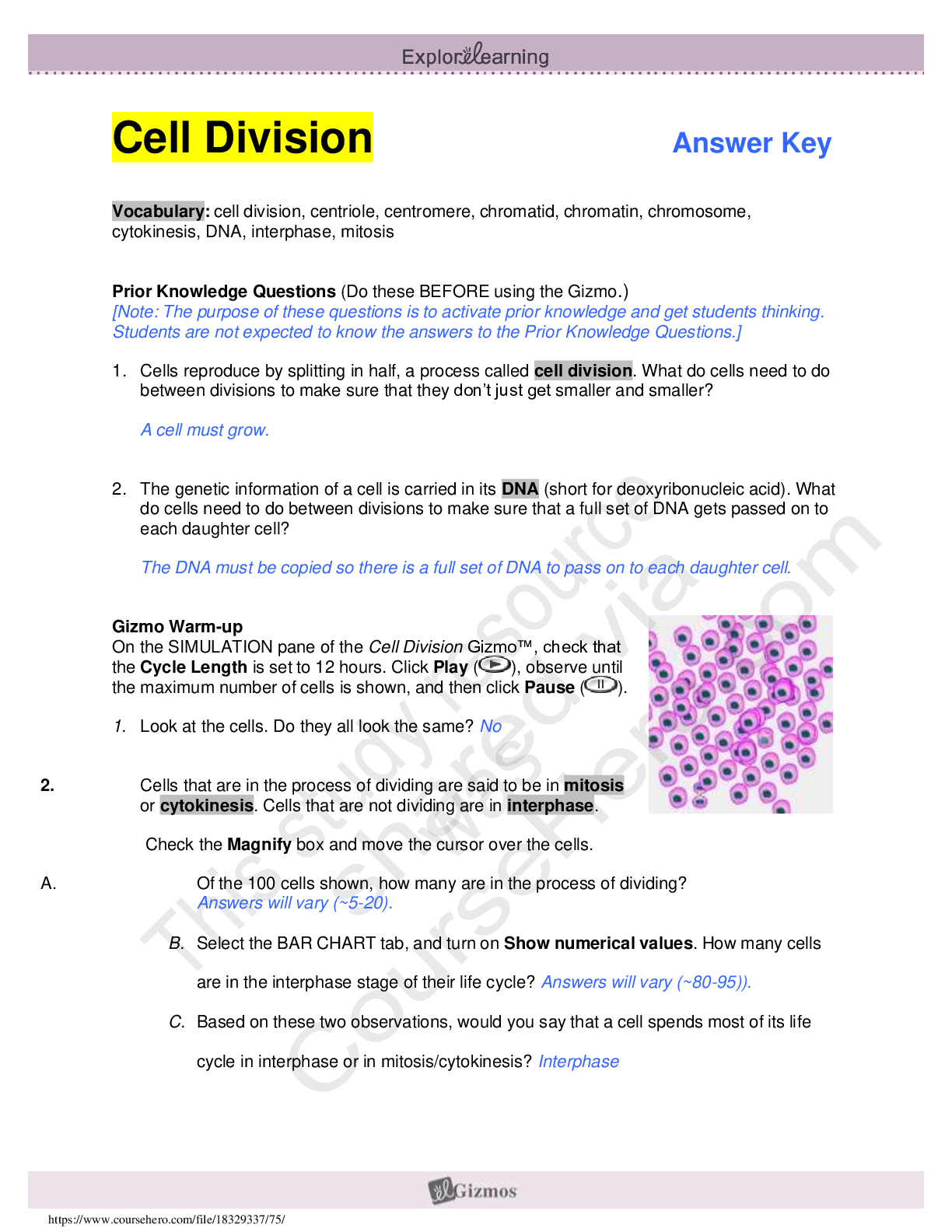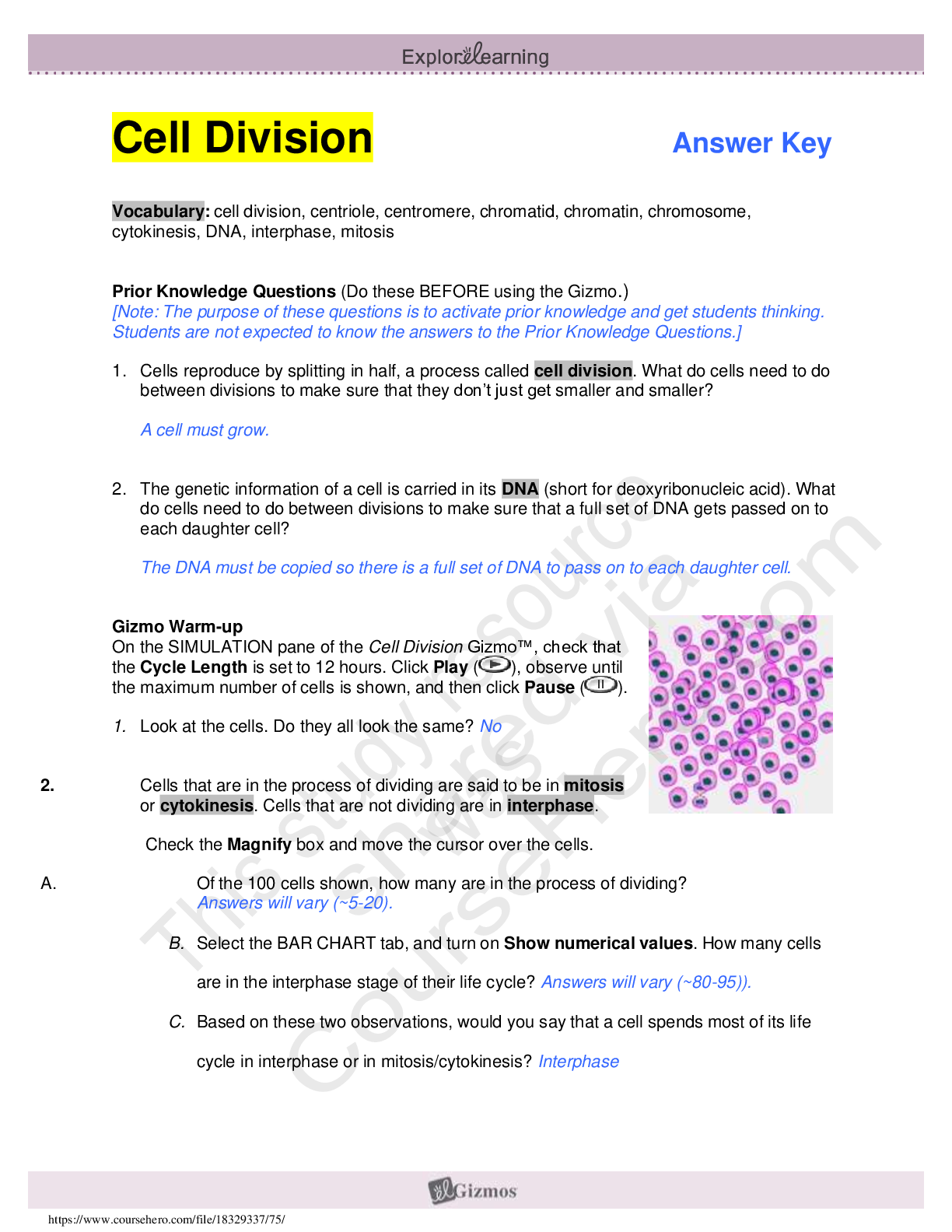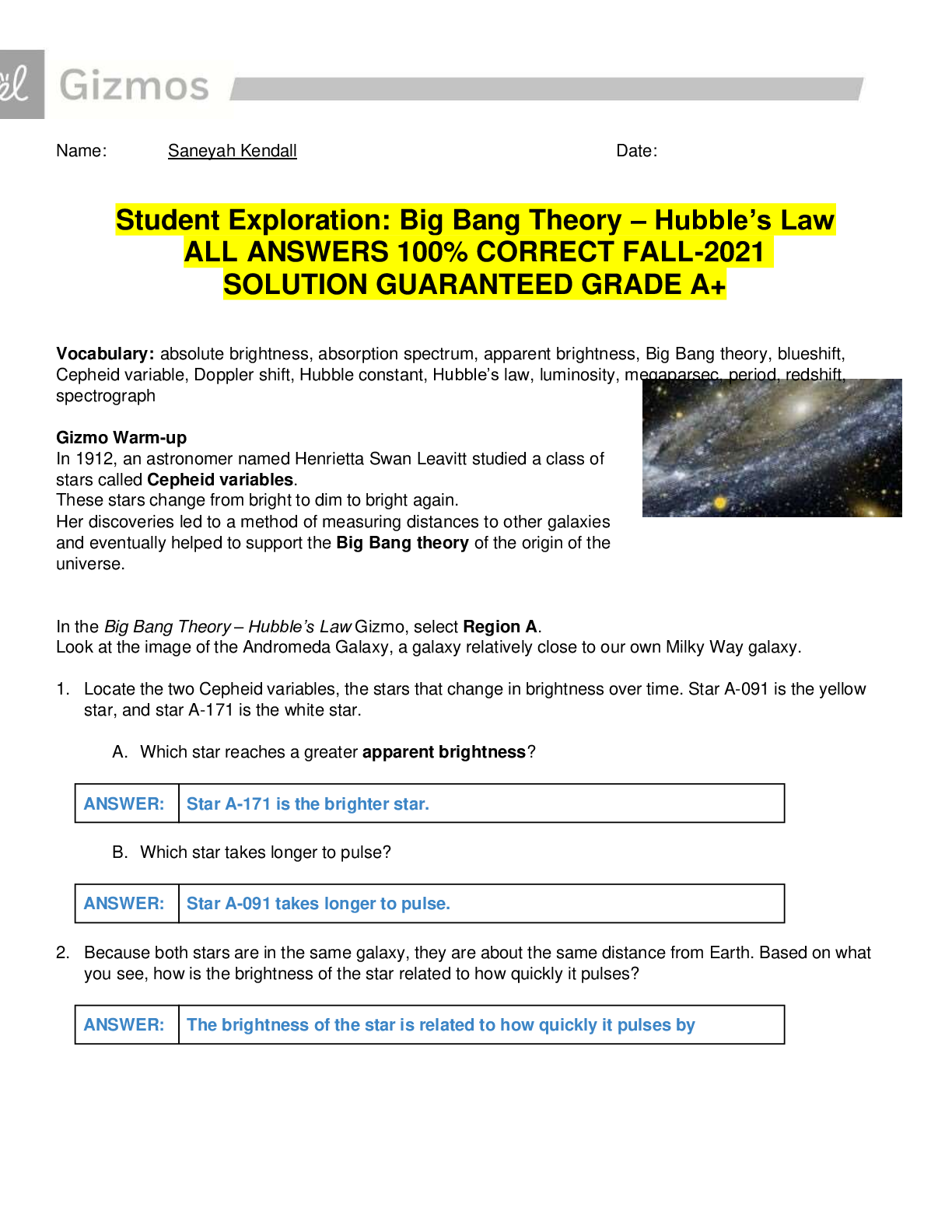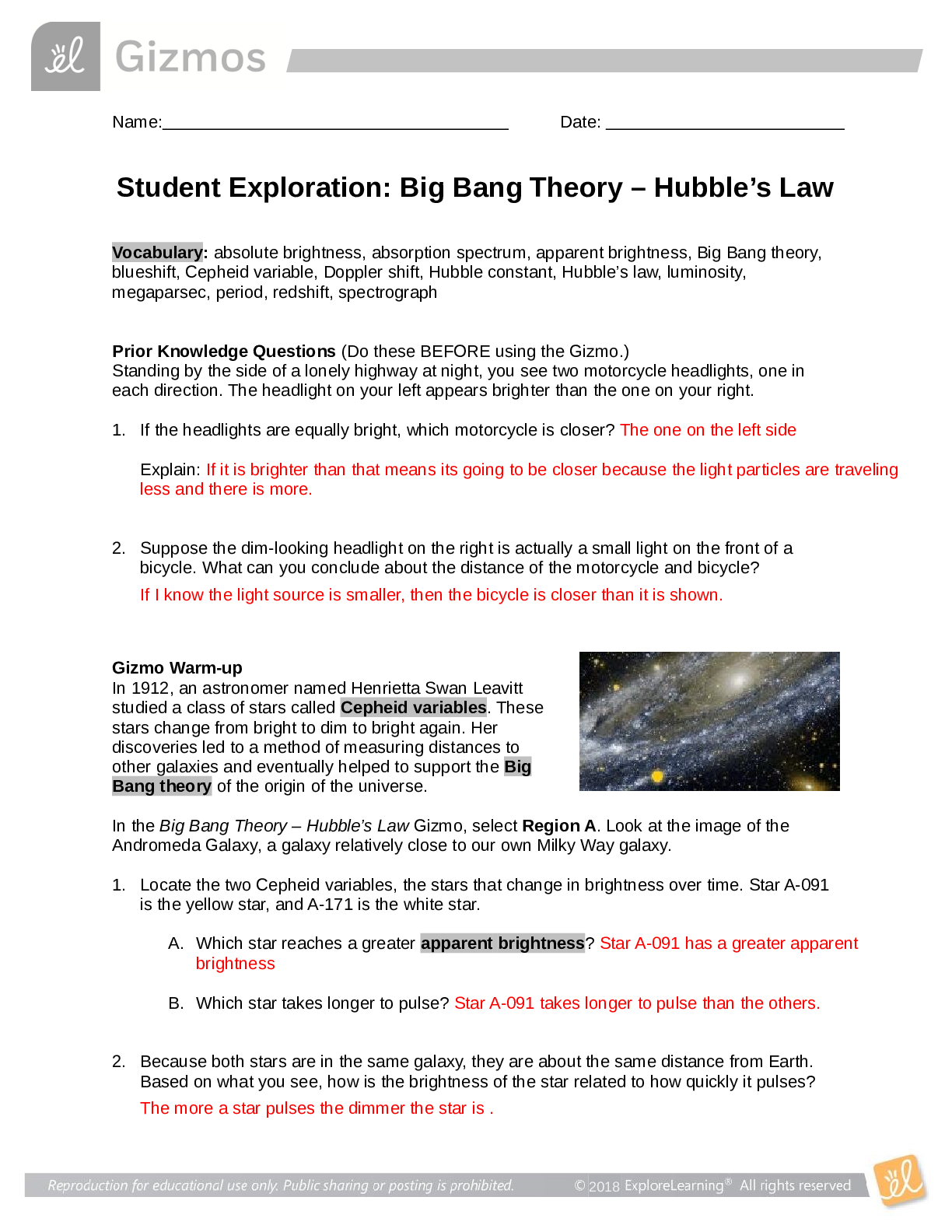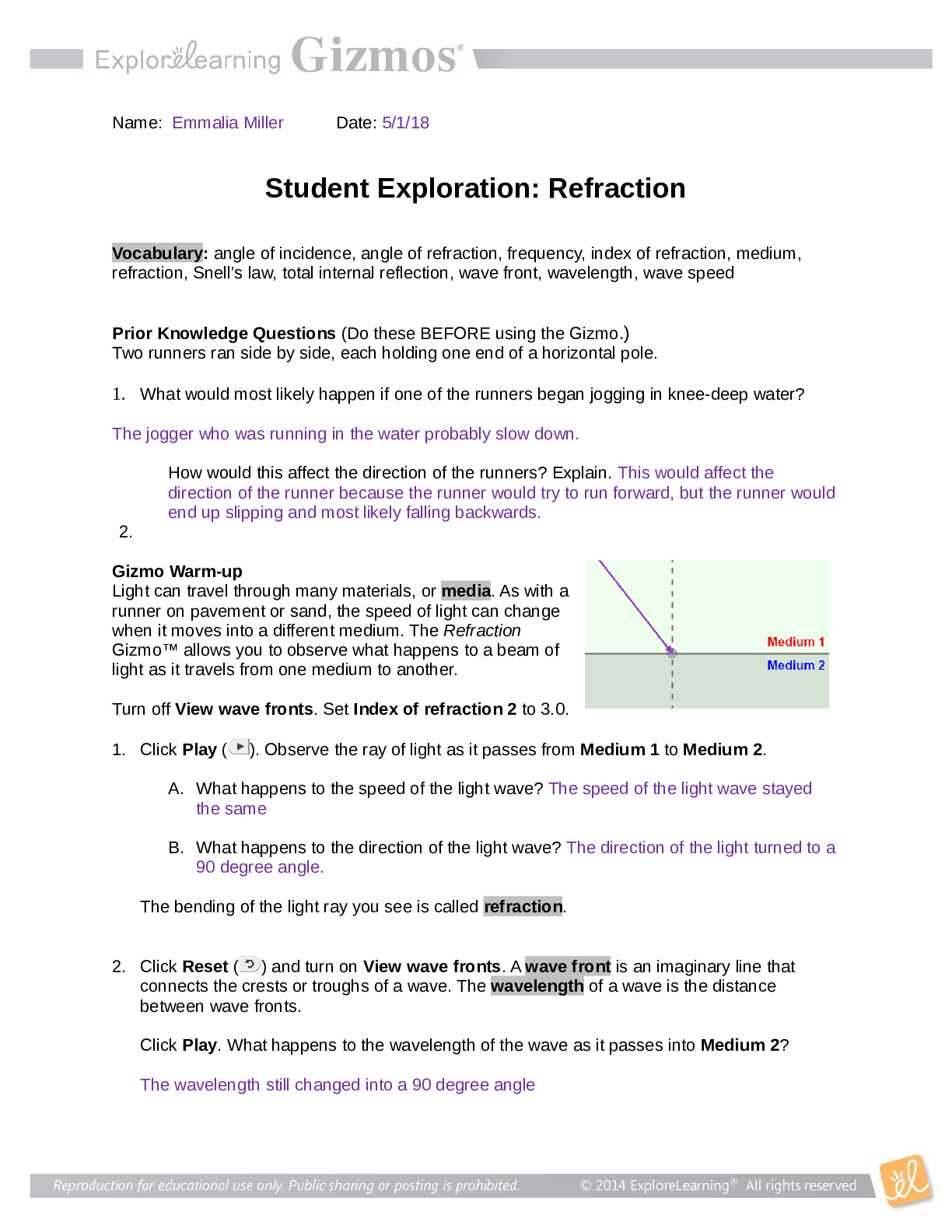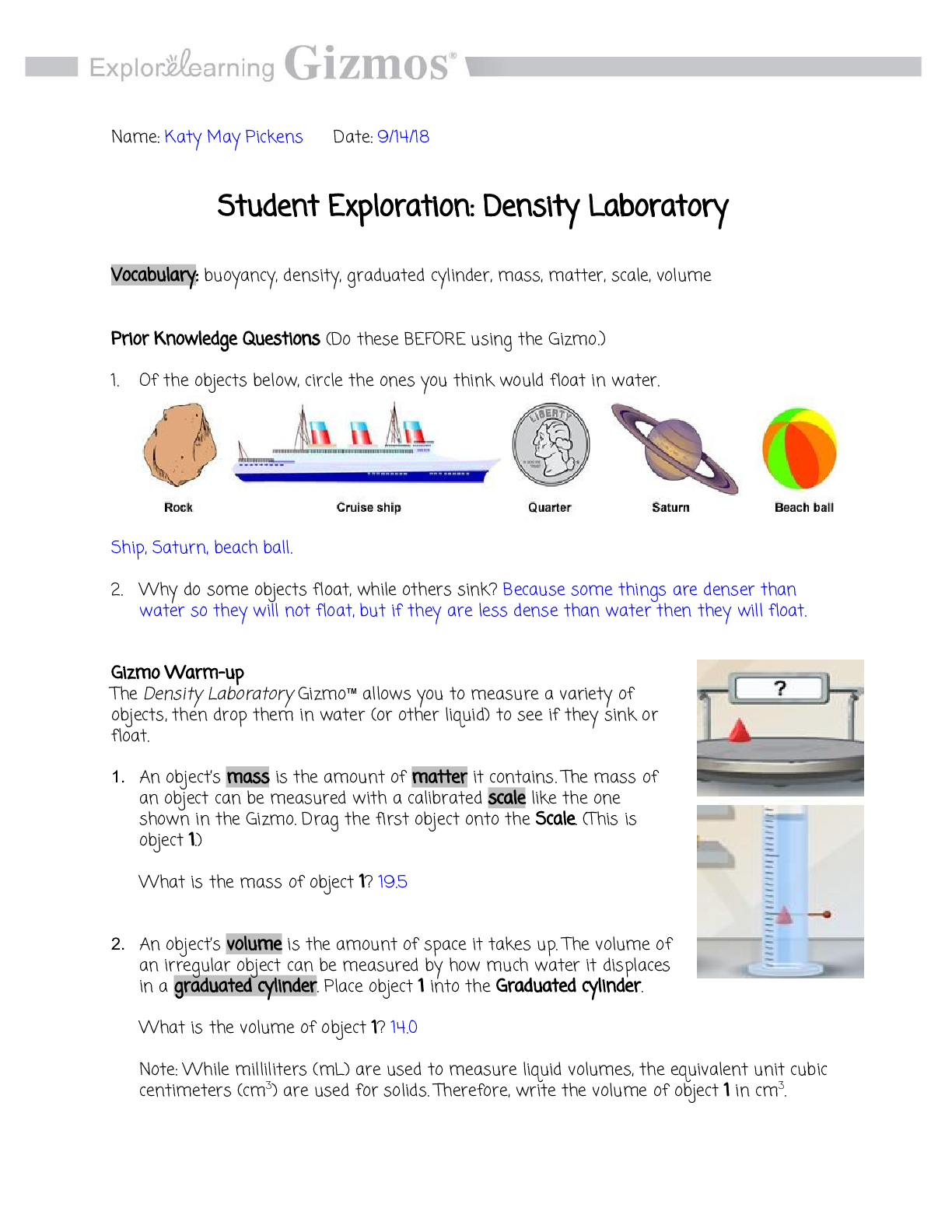Software Engineering > GIZMOS > GIZMO Copy of KWAL 5 River Erosion (All)
GIZMO Copy of KWAL 5 River Erosion
Document Content and Description Below
Exam (elaborations) GIZMO Copy of KWAL 5 River Erosion Student Exploration: River Erosion Vocabulary: cutbank, discharge, erosion, flood, floodplain, meander, meandering river, oxbow lake, point bar, ... river speed, sediments, slope, streambank, streambed, tributary, weathering Prior Knowledge Questions (Do these BEFORE using the Gizmo.) 1. The image above shows a raging mountain river in full flood. What do you think is making the water brown in color? Dirt 2. What impact do you think the flooding river will have on the surrounding landscape? Erosion Gizmo Warm-up If you stand by the bank of a river, it may seem that very little is happening. But over thousands and even millions of years, rivers can have a profound effect on the landscape. In the River Erosion Gizmo, you will see how rivers move materials and how they affect landscapes. To begin, check that Mountain stream and Short-term erosion are selected. The Gizmo shows a typical stream that is moving through a hilly area. 1. The two movie cameras ( ) allow you to observe different parts of the stream up close. Click on the left movie camera. What do you see? I see fish swimming in the water & some rocks. 2. Sediments are small rock fragments such as sand or pebbles. What evidence do you see that sediments are being transported? How the water is flowing & the fish moving right. 3. Now select the right movie camera to see the bank of the mountain stream. What is happening to sediments on the bank? It eroded & then it fell into water. This study source was downloaded by from CourseH on 07-21-2021 11:31:30 GMT -05:00 This study resource was shared via CourseH GIZMO Copy of KWAL 5 River Erosion Activity A: Mountain streams Get the Gizmo ready: ● Check that Mountain stream and Short-term erosion are selected. ● If necessary, click outside the circle to close the zoomed-in view. Introduction: Erosion occurs when sediments and other materials are moved from one place to another. Along with weathering, which is the breakdown of large rocks into smaller sediments, erosion can have a profound impact on the landscape. Question: How does river erosion affect landscapes in the mountains? 1. Label: First, get to know some of the different parts of a mountain stream. Turn on Show labels. Label the image to the right, then fill in the word that goes with each description. A small stream that flows into a larger stream: Tributary A place along a stream where water drops straight down: W aterfall A letter that describes the shape of a typical mountain valley: V_shaped valley The side of a stream: Streambank The bottom of a stream: Streambed 2. Observe: Turn off Show labels. Next to “Release barrel,” click Play ( ). Observe how fast the barrel moves as it floats down the stream. What happens when the barrel goes over the waterfall? The barrel speeds up when falling down the waterfall. 3. Calculate: The two red flags are 100 meters apart. The time at which the barrel passes the flag is shown. Remember, there are 60 seconds in a minute. A. How many seconds did it take for the barrel to go 100 meters? 91 seconds B. To find the barrel’s speed, use a calculator to divide the distance traveled (100 m) by the time it took the barrel to float 100 m. The units are meters per second (m/s). What is the speed of the barrel? 1.1 m/s V-shaped valley Waterfall Tributary Streambed Streambank This study source was downloaded by from CourseH on 07-21-2021 11:31:30 GMT -05:00 This study resource was shared via CourseH 4. Record: Click Reset ( ). Turn on Show data. A. The slope of the channel is how steep it is, or how many meters the streambed drops for every horizontal kilometer. What is the slope of the stream? 22.0 m/km B. River speed is a measure of how fast water flows. What is the river speed? 1.1 m/s C. How does the river speed compare to the speed of the barrel you calculated on the previous page? There the same D. Discharge is the water volume that flows past a given point every second, measured in cubic meters per second (m3/s). What is the stream’s discharge? 2.3 ㎥/s E. What types of sediments are transported by this stream? Sand, silt, & clay. Sediments are classified by size. The smallest sediments are clay particles, followed by silt, sand, and pebbles. Larger sediments include cobbles and boulders. 5. Observe: Turn off Show data. Next to River flow, select Flood. Look at the landscape, and then click on the movie cameras to see zoomed-in views. Describe what you notice. The water level rose, it moved faster, the water got darker, the amount of sediments increased, the erosion on banks of river increased. 6. Calculate: Click Play to release the barrel. How many seconds does it take the barrel to get from one flag to the other? What is the speed of the barrel? Time: 31 seconds Speed: 3.2 m/s 7. Compare: Turn on Show data. During a flood, how do the river speed, discharge, and transported sediments compare to normal flow conditions? The river speed got aster, the discharge increased, & the transported larger sediments (pebbles). This study source was downloaded by from CourseH on 07-21-2021 11:31:30 GM [Show More]
Last updated: 1 year ago
Preview 1 out of 7 pages
Reviews( 0 )
Document information
Connected school, study & course
About the document
Uploaded On
Feb 26, 2022
Number of pages
7
Written in
Additional information
This document has been written for:
Uploaded
Feb 26, 2022
Downloads
1
Views
92
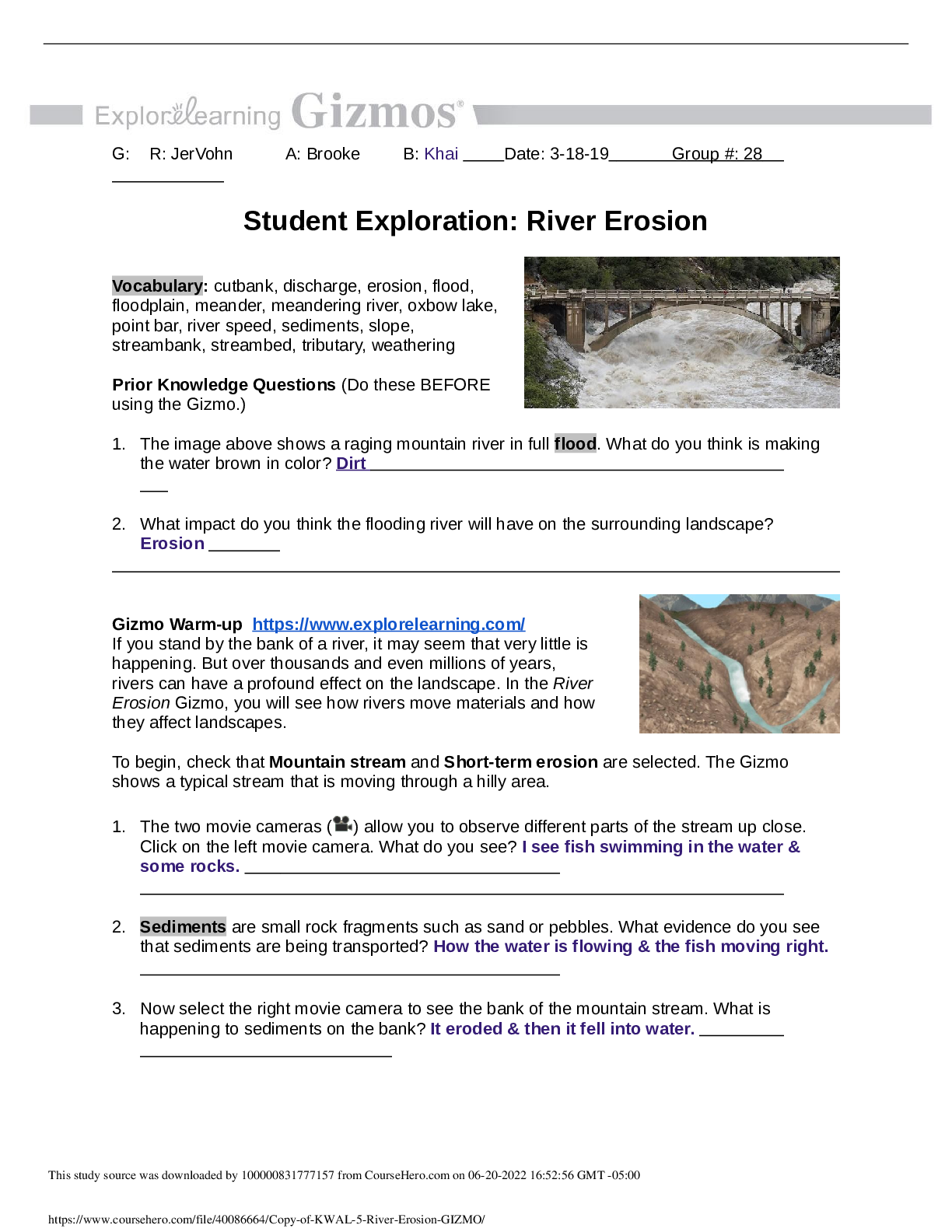

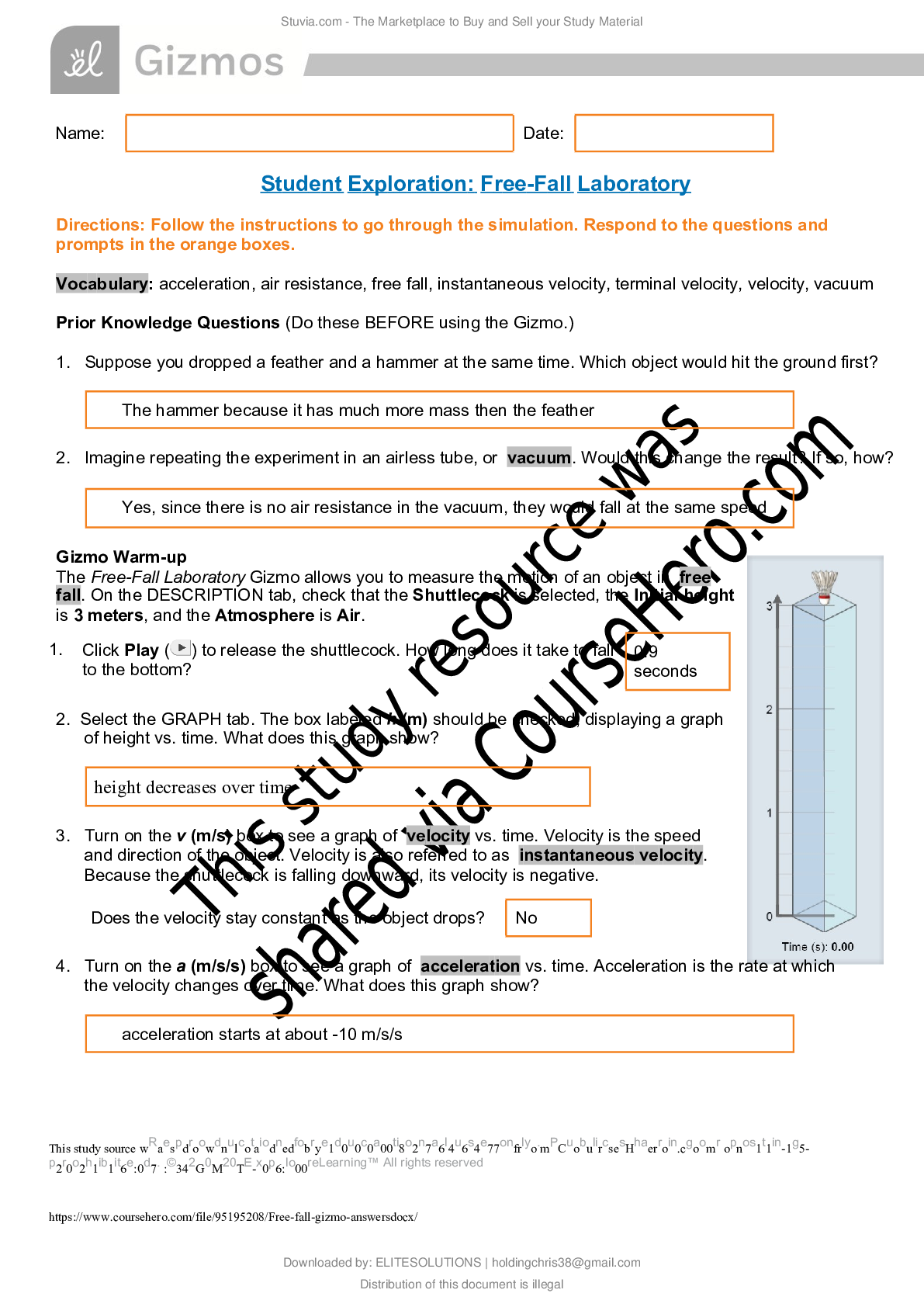
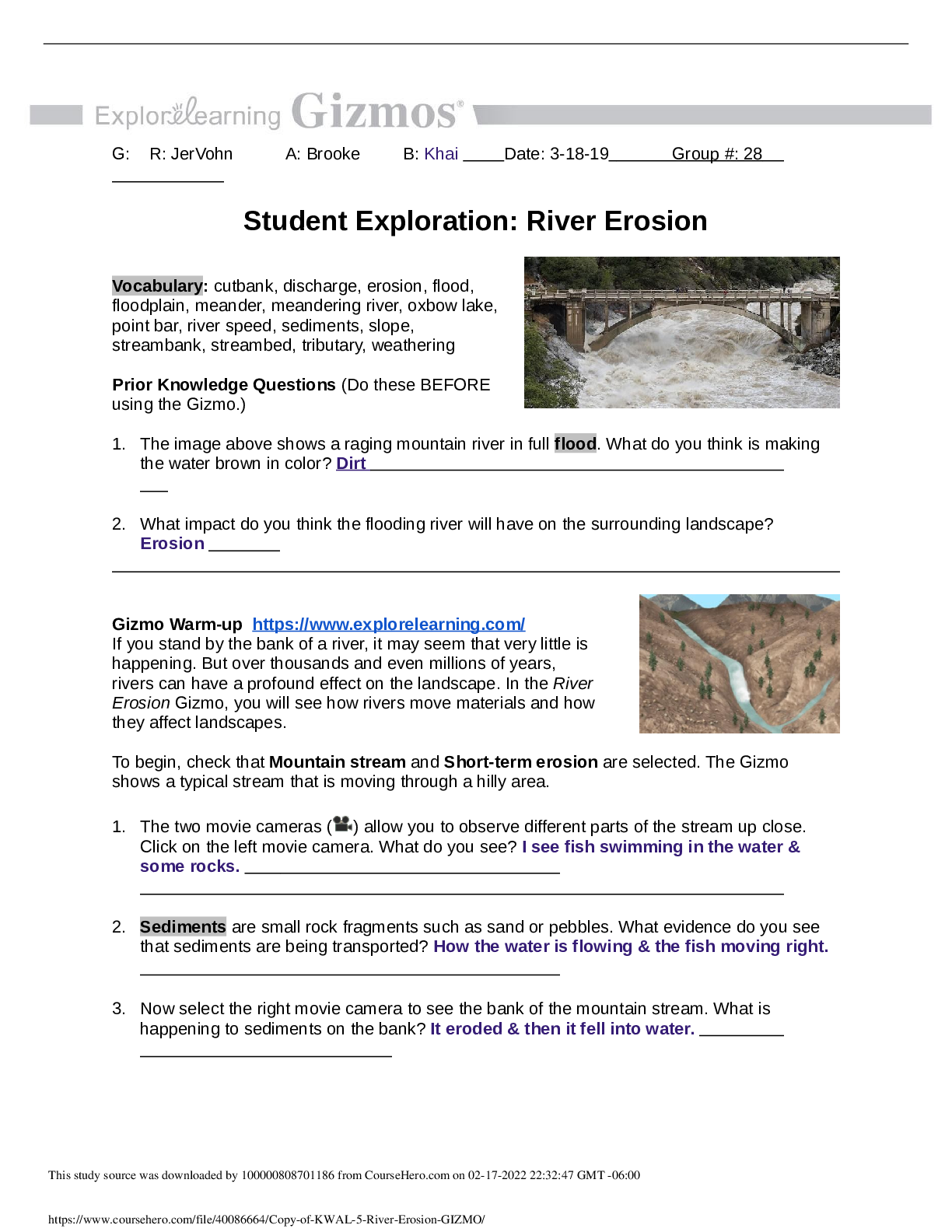
.png)


